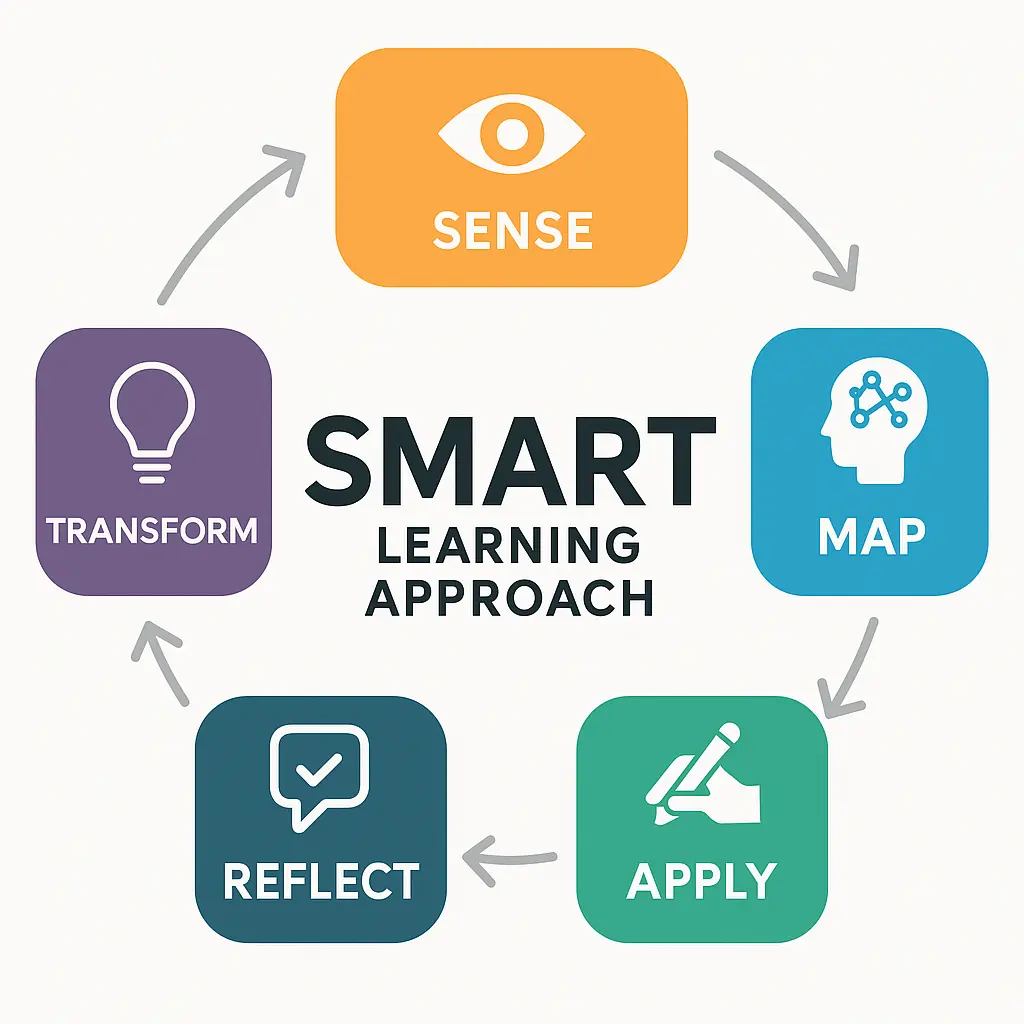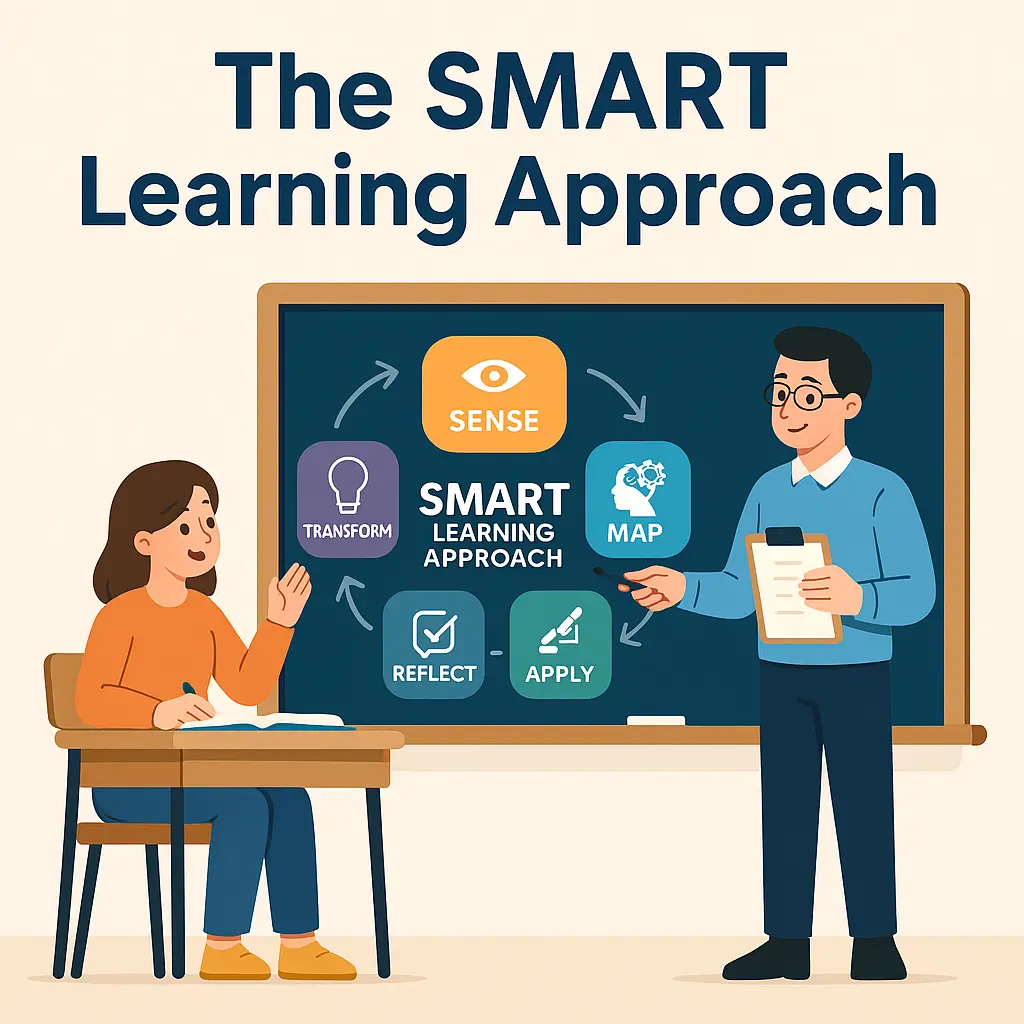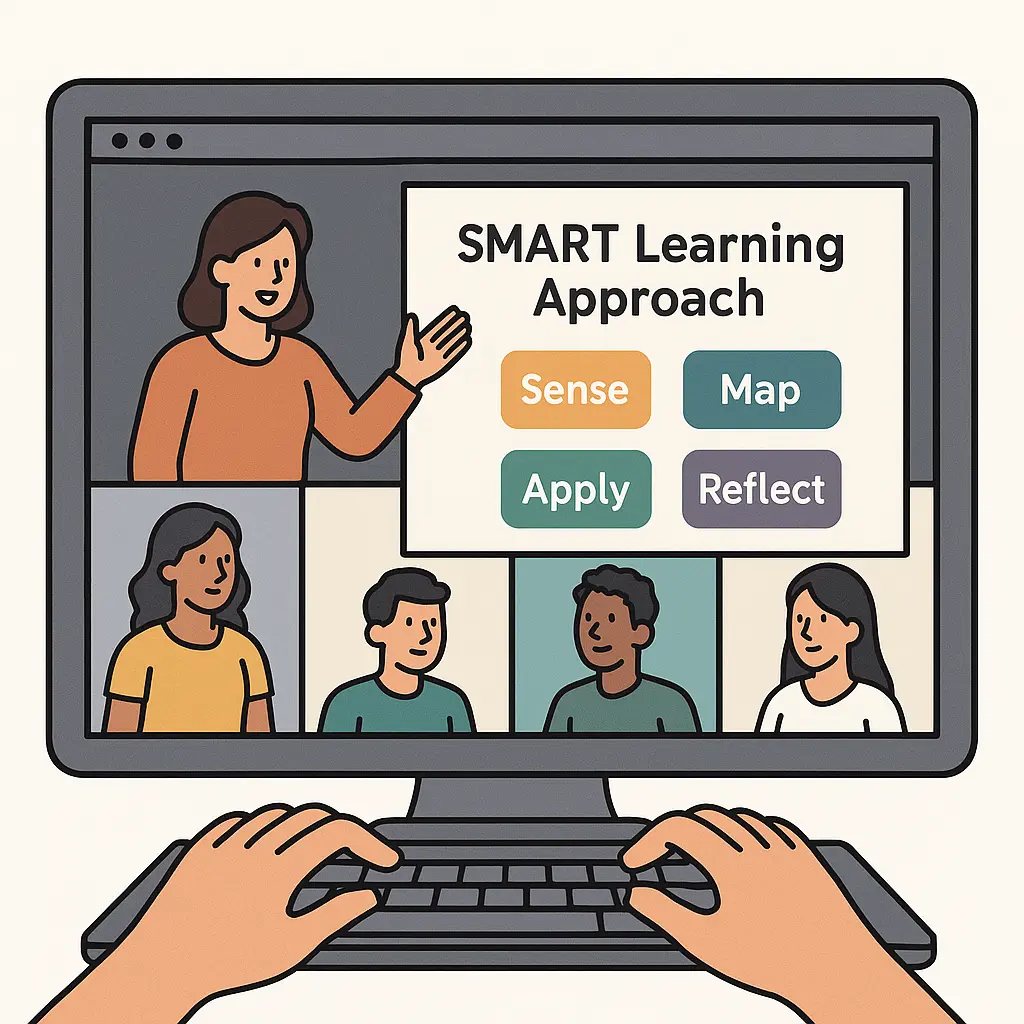SMART Learning Model Online Education | VLE Tutors
At VLE Tutors, we believe in the power of structured, purposeful learning. Our SMART Learning Model for online education helps students build knowledge confidently, develop independent thinking, and succeed across every subject. We apply this model in GCSE Maths, GCSE English, and A-Level Maths to ensure consistent, high-quality learning experiences.

A clear visual of how the SMART Model supports learning step by step.
This central diagram captures the SMART process in full: from initial exposure to new ideas (Sense), through organisation and contextualisation (Map), to hands-on engagement (Apply), reflective analysis (Reflect), and final synthesis into long-term understanding and confident use (Transform). It is not linear—it’s cyclical, encouraging students to revisit and reinforce concepts continually.
SMART Learning Model Steps for Online Education
S – Sense: Introduce new content clearly by connecting it to what students already know. This aligns with constructivist theories and schema activation (Anderson, 1977).
M – Map: Help students organise concepts visually and mentally using scaffolding techniques. Inspired by concept mapping (Novak & Gowin, 1984), this promotes deep processing.
A – Apply: Learners practise using real examples, exercises, and structured activities. This follows the principle of deliberate practice and distributed retrieval (Roediger & Butler, 2011).
R – Reflect: Engage in low-stakes quizzes, reviews, and targeted feedback to deepen understanding. This step integrates metacognition (Flavell, 1979), helping students think about their own thinking.
T – Transform: Students use knowledge independently to explain, reason, and succeed across tasks — fostering mastery and adaptive expertise (Hatano & Inagaki, 1986).

Illustration of students actively engaging with SMART teaching techniques.
This image shows how students participate in interactive SMART-based lessons. They’re not just passive listeners — they engage in structured learning activities, peer discussion, and immediate reflection. The model empowers them to take ownership of their progress.

Teachers deliver live, structured online lessons based on the SMART Learning Model.
SMART works in online settings just as well as face-to-face. This illustration represents our tutors using the model during live virtual classes — integrating digital tools for collaboration, guided practice, and timely feedback, ensuring every learner stays actively involved.

Evidence. Reasoning. Application.
The SMART Model is more than an acronym—it’s a structured learning system backed by cognitive and educational science. Each phase draws on solid research: schema theory (Anderson), concept mapping (Novak & Gowin), deliberate practice (Roediger), metacognition (Flavell), and expertise development (Hatano & Inagaki).
This isn’t just theory. SMART works in live online classrooms, supported by digital tools, clear feedback cycles, and intentional lesson design. From sensing new information to transforming it into long-term understanding, students build cognitive agility and academic confidence.
And that’s why it works—not just for exams, but for life beyond the classroom.
SMART and the UK National Curriculum
The SMART Learning Model is deeply aligned with the aims of the UK National Curriculum, which promotes the spiritual, moral, cultural, mental, and physical development of pupils, and prepares them for the opportunities and responsibilities of later life.
Each SMART phase mirrors key educational priorities:
- Sense & Map help students make connections across subjects, supporting cross-curricular understanding and deeper learning.
- Apply & Reflect encourage students to practise, revise, and evaluate — central to building independence and metacognitive awareness.
- Transform empowers learners to adapt and apply knowledge in diverse contexts — echoing the curriculum’s goal of fostering resilience and lifelong learning.
The SMART model also promotes inclusion and equality of opportunity, offering a flexible structure that supports students of all abilities and backgrounds. It aligns with research-backed strategies endorsed in national policy and classroom practice across England.
References
- Anderson, R. C. (1977). Schema-directed processes in language comprehension.
- Novak, J. D., & Gowin, D. B. (1984). Learning how to learn.
- Roediger, H. L., & Butler, A. C. (2011). The critical role of retrieval practice in long-term retention.
- Flavell, J. H. (1979). Metacognition and cognitive monitoring: A new area of cognitive–developmental inquiry.
- Hatano, G., & Inagaki, K. (1986). Two courses of expertise.
- Sweller, J. (1988). Cognitive load during problem solving: Effects on learning.
- Zimmerman, B. J. (2002). Becoming a self-regulated learner: An overview.
- Cepeda, N. J., et al. (2006). Distributed practice in verbal recall tasks: A review and quantitative synthesis.
